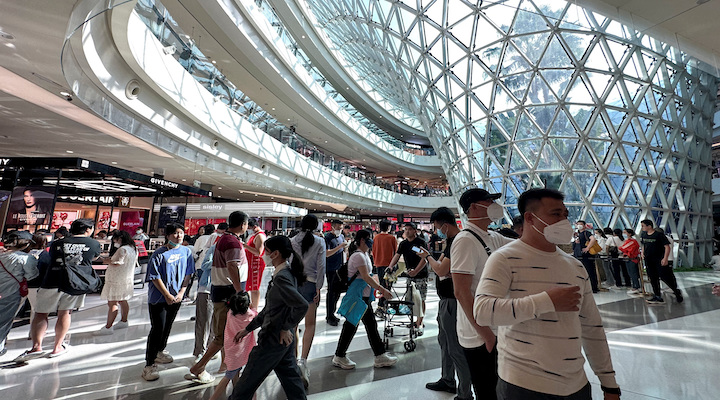As China reopens its borders, there is no better time to understand how Chinese luxury consumers have evolved and what changes brands can look forward to over the coming years.
China has been the main growth engine for many luxury brands for some time. With the country having undergone rapid economic development over the last decades, so too have the levels of sophistication among its consumers. Not only that, the Covid-19 pandemic has led to lasting changes in consumer behaviour and preferences
In our recent report Luxury Redefined – Building trust with Chinese consumers through authenticity and integrity, KPMG China took an in-depth look into the Chinese luxury market. Based on a survey of more than 2500 consumers in the Chinese Mainland and Hong Kong SAR, as well as interviews with a wide range of industry leaders, our research shows that Chinese consumers have a unique definition of luxury that brands must understand if they are to continue to thrive in the China market.
Understanding the key personas in the Chinese luxury market
Consumer mindsets in luxury markets around the world have generally gone through similar development, with consumers initially opting for well-known overseas brands and using luxury as an outward display of status, before becoming more sophisticated in their tastes through increased knowledge of and experience with luxury products. Where China differs is the sheer pace at which this transition has taken place.
Analysis of the survey data resulted in the identification of five core personas, ranging from relative newcomers in the market to more sophisticated and community-minded consumers. In addition, Luxury Redefined highlights two emerging consumer personas that are expected to become increasingly significant over the coming years and should be on the radar of luxury brands.
‘Cultural Resonators’ are a young cohort of shoppers whose purchasing habits are driven by emotional connections to Chinese culture. Cultural Resonators see purchasing local brands as a sign of being an ‘insider’ – and one that allows them to represent their heritage. Meanwhile, ‘Luxury Investors’ purchase luxury brands for their resale value, treating such products as an alternative investment vehicle.
Gen Z will soon become the major force of purchase in China
Gen Z consumers are increasingly being targeted by brands because they represent the fastest-growing population group in the Asia Pacific region. By 2025, Gen Z will account for a fifth of the total population of the Chinese Mainland. Our data shows that Gen Z consumers are willing to commit a higher proportion of their income on luxury items than millennials and they are more receptive to the use of new technologies such as augmented reality, virtual reality and the metaverse.
Gen Z also expect brands to commit to issues such as sustainability and to be purpose-driven. This is translating into their purchasing intentions, with Gen Z more likely to change their allegiances if a brand does not align with their values and beliefs compared with their older counterparts. Crucially, Gen Z will also try to influence others to do the same when a brand falls short of expectations.
Brands need to understand the values, beliefs, motivations and behaviours of Gen Z, and factor those insights into retail experiences and customer journeys. They should also take note of the different mindsets within this generation depending on their location – Hong Kong, Tier 1 and Tier 2 cities.
Interest in sustainability is gaining traction
While there is a growing appreciation for sustainability and corporate responsibility initiatives in China, this is mainly driven by younger consumers. According to the survey, younger luxury consumers place a higher importance on sustainability and corporate responsibility when making luxury purchases: 30 per cent of surveyed consumers aged 18 to 24 think it is a key consideration, compared with only 16 per cent for those aged between 45-54.
While more mature consumers have yet to fully buy into the concept of sustainability, views around it are expected to change across the board. When that happens, brands need to be able to adapt quickly. It is sometimes easy to forget that luxury products are intrinsically more sustainable than fast fashion as production runs are more limited and items last longer. Marketing will play a key role in educating consumers and informing them of the various initiatives that brands are undertaking.
Reopening of borders expected to impact the global luxury market
During the pandemic, Hainan, the largest tropical island in China, became an attractive tourist destination for Chinese Mainland leisure travellers due to international travel restrictions. The island also emerged as a key retail destination for luxury products, supported by its duty-free shopping policies. As one of the world’s largest luxury consumer markets, China is reopening its borders in early 2023. Following nearly three years in relative isolation, major shifts in the global luxury market are to be expected once leisure travel for Chinese shoppers resumes.
While international travel might initially be slow to pick up, longer-term an adjustment in the proportion of domestic and international luxury spending can be expected – although it is hard to say how much as consumers have become accustomed to shopping domestically.
The challenge here is for brands to ensure that the shortfall in revenues they experience in the China market can be re-captured overseas. For instance, brands could consider having sales associates set up appointments for VIP customers in overseas stores upon learning of their travel plans. There is no doubt we can expect to see the use of many innovative strategies and tactics in what is shaping up to be a pivotal year for the luxury industry.
About the author: Anson Bailey is head of consumer & retail, KPMG Asia Pacific.






